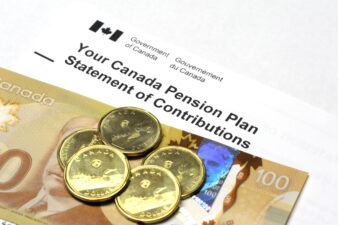Different investors have different criteria for choosing the right ETFs to add to their portfolios. Some are more focused on low fees and a lower risk rating, while others seek powerful growth potential or generous distributions. However, many investors are attracted by a trait that’s common for most ETFs — i.e., diversification.
But even though most ETFs are diversified, the extent can be drastically different. Some sector-focused ETFs are on the lowest end of the diversification spectrum, and, on the other end, there are ETFs like Vanguard Growth ETF Portfolio (TSX:VGRO) that don’t just offer you exposure to a wide variety of stocks but also two different asset classes (equities and bonds).
The ETF
The Vanguard Growth ETF portfolio is relatively new and was created in early 2018. It offers an 80/20 mix of equities and bonds — enough to capture most of the upside the equities have to provide while nicely balancing it with a fixed-income option. This gives it more diversification points than all-equity and all-fixed-income ETFs.
Its diversification comes from another angle as well. It’s not an ETF made up of securities but rather of seven other ETFs (four equity and three bonds). And the equity ETFs cover a broad geographic area: U.S. all-market, Canada all-market, remaining North American markets, and certain emerging markets. This makes the total number of equities you can access through this ETF around 13,644.
Another impressive characteristic of this ETF is the relatively lower MER of about 0.24%. At this rate, it would need four years to eat away 1% of your portfolio’s growth.
The return potential
Even a higher fee can be absorbed if the ETF offers adequate growth. But a low-cost and decent growth combination is even more desirable. If you had invested $10,000 in this ETF at the time of inception, you would have grown it to about $12,900 by now and over $14,300 at its peak. These returns include the quarterly distributions the ETF makes.
The distributions from the ETF are sometimes reinvested, but cash distributions are more common. Despite the current slump in the ETF value, the yield is not quite attractive at 1.48%.
It’s important to understand that one of the reasons this low-cost ETF offers an unimpressive growth potential is the over-diversification and the bonds, which are great for safety but not for capital appreciation.
The good news is that most of the equities are from two countries: Canada and the United States. So, when these two enter the next bull market phase, you may see the ETF growing at a much better speed.
Foolish takeaway
The ETF vs. index fund debate is almost moot nowadays, since most ETFs are usually following an index and offer you a low-cost alternative. But funds like this one also offer insight into how aggressively an ETF can be diversified compared to an index fund.







